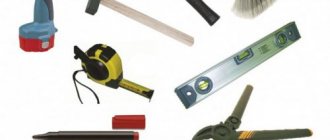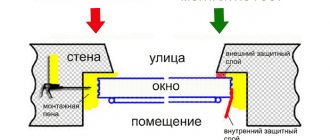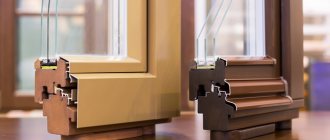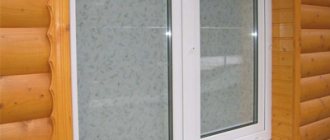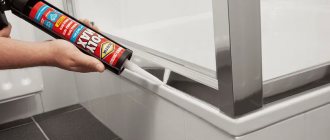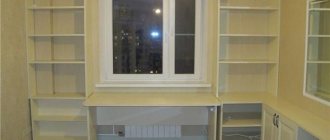Modern plastic windows provide tightness and increase the thermal properties of enclosing structures.
To achieve the required level of energy efficiency and operating comfort, each movable sash is equipped with adjustable fittings.
The owner of the premises has the opportunity to adjust the pressing force of the vestibule, as well as the position of each structural element. To set the optimal position of the sash, the height of the pressure on PVC windows on the hinge side is adjusted.
What is adjustment of plastic windows
Each window or door product has factory specifications. Over time they change, not for the better. Adjusting windows and doors returns the structure to its original state, which extends its service life.
Adjustment of plastic windows and doors is carried out in the following cases:
- creaking when opening or closing the sash;
- the handle gets stuck;
- it also stops fixing the movable element of the window - the sash;
- the sash must be lifted when it needs to be closed;
- draft through the gap between the frame and the window sash;
- traces of wear on the plastic.
How to remove and change double glazed windows
Sometimes it is necessary to disassemble a plastic window to replace the glass unit - the glass has cracked or broken, or has become leaky (condensation settles between the glasses). Sometimes it is necessary to change the rubber seal that is located around the perimeter of the glass on the indoor and outdoor side. Over time, it loses elasticity and begins to blow from under the glass. For all this work, the glass unit must be removed.
The glass unit is held in the frame by glazing beads - thin plastic strips. To remove the glass unit, they must be removed. There are four beads on each double-glazed window - two long vertical, two short horizontal. We start shooting from the long ones.
To work, you will need a spatula with rounded corners or an old knife with a thick blade, or some other similar tool. This tool is inserted at an angle into the gap between the bead and the frame.
There is a small gap between the bead and the frame. We insert the edge of the tool into it
By slightly turning the blade to the right or left, we disconnect the glazing bead from the frame. It is fixed in a groove, and when pressed, it comes off quite easily. By moving the tool up and down, we separate it at a greater length. Now, holding the glazing bead with your hand, you can easily remove it. We carry out the same operation with the second vertical and horizontal slats.
To prevent the glass unit from falling out, it is better to remove the top bead last. In this case, you need to lightly hold the glass with your hand (just keep in mind that they have a significant weight). By slightly pulling the glass towards you at the top, we remove it from the frame.
A new or repaired double-glazed window is installed in the reverse order. First, pads are placed - rubber plates that soften contact with the frame. The glass is aligned, aligned with the center - the gaps on the right and left should be equal.
Place the glazing beads in place. But this time they put the top one first, then the bottom one, then the side ones. The procedure for installing the glazing bead is as follows: insert one edge into the groove, insert the second edge. Press the middle with your palm until it clicks.
Types of adjustment of plastic windows
There are several functionalities of PVC windows, where different mechanisms are used. They must be adjusted from time to time.
But there is a type called seasonal adjustment, which must be carried out when the seasons change - before the onset of cold weather and warming . That’s what it’s called – adjustment for winter or summer. Regulatory processes are carried out in autumn and spring.
Seasonal adjustment
This is a simple setup option. It is based on changing the gap between the sash and the frame of the plastic window. The bottom line is that in winter and at low temperatures, rubber decreases in size, which causes a gap to appear through which cold air will freely penetrate into the room. Therefore, the gap is kept minimal or closed tightly.
In the warm season, on the contrary, the rubber expands. Therefore, the pressure is made weaker. At the same time, the tightness of the window remains maximum.
Find out how to install a supply ventilation valve on a plastic window.
Adjusting the folding mechanism
This device is necessary for ventilation. That is, the sash does not open completely, but leaves a small gap for air to penetrate from the street. This is an additional feature.
The window itself opens and closes using standard technology:
- if the handle is down, it means the window is closed;
- if it is turned to the side, it is open.
To ventilate, the handle must be turned 180º from the “closed” position.
Adjusting the pressure of a plastic window is that the pressure often weakens, and it must be brought to normal. Therefore, using an asterisk or hexagon, turn the screw located in the corner of the window structure. As a result, the sash either rises or falls.
Adjusting fittings
The word “hardware” includes several elements: a plastic window handle, pins, scissors, strikers and locking strips, a micro-ventilation system, a lock. As for the settings, three positions are taken into account:
- repair;
- replacing them with new ones;
- adjustment of fittings.
Features of fittings adjustment
If you have the desire and knowledge, then adjustment is not difficult. But we must always remember that unqualified intervention can lead to very sad consequences. Never start twisting anything until you understand the purpose of each element and screw, otherwise you can completely throw off the normal positions and require professional intervention.
Adjusting plastic windows requires certain knowledge
A plastic window is a rather complex engineering structure; it has many fixation points, which makes it possible to shift the position of the sash in all planes.
Plastic window device
Plastic window fittings
Table. Adjustment methods
| Type of adjustment | Offset parameters and brief description |
| It is fixed on an impost or frame, has the ability to move up and down, the displacement amplitude is ±1 mm. |
| Holds the sash in a given state, adjustment allows you to change the position by ±1 mm. |
| The amplitude is approximately ±0.8 mm and is responsible for the degree of pressing of the seals to the frame and impost. |
| Raises and lowers the sash by ±2 mm. |
| Width | The adjustment moves the sash to the left or right, within ±2 mm. |
But not everything is so simple; it is impossible to achieve the correct position with just one adjusting bolt. The fact is that the sash is fixed on two hinges; if one moves left/right or forward/backward, then one corner of the sash remains stationary, and the second moves in an arc. In addition, several adjustment units are responsible for the same displacements; when making changes, it is necessary to achieve a situation in which the loads on both loops are distributed evenly. Otherwise, there is a risk of new deformations that are even more critical than the previous ones.
When adjusting the window, it is important to ensure an even distribution of the load on both hinges
Main adjustment points for PVC windows
There are three points through which adjustment is made:
- Bottom loop. Here you can raise the sash or lower it, or move it horizontally. The displacement usually does not exceed 2 mm.
- Top loop. Here you can only achieve movement in the horizontal direction.
- Trunnions, also known as eccentrics, located on the side of the plastic window sash. With their help, the pressure is adjusted. Their number varies from 4 to 8, respectively, and there may be several adjustment points.
When is it required?
The hinges on PVC windows are adjustable in 3 directions - horizontally, vertically and for clamping. Changing the position of the mechanisms for securing the sashes is necessary when any of the following situations occur:
Up down. The hinges are adjusted in the vertical plane by turning the screw located in the upper part of each suspension, where the fixing pin is installed.
Position adjustment is required when the sash sag or sag over time.- Right left. The hangers can also be adjusted horizontally by turning the corresponding screw. The correction mechanism is located on the inside of the hinge, at the point where it interfaces with the movable sash.
- Clamp - relevant for the lower hinge, it provides an even gap at the junction of the sash with the fixed frame, when tilting the element.
If a misalignment is detected on the sash, an individual position is set on each hinge.
On a note. If a structural element needs to be moved entirely, the screws on different hangers must be turned equally.
Primary
At the factory, the hinge mechanism is automatically adjusted to the neutral position so that when adjusted in all directions, identical play is formed. After installing the window, this position does not always ensure comfortable operation of the window, which requires minor adjustments to the structural element.
This work is most often performed by the installation team upon completion of installation and sealing of the cracks. Before making adjustments, specialists check the normal movement of each movable leaf and the functionality of the mechanisms. As a result, the customer receives a fully adjusted window with the correct position of the hinges.
After use
During long-term use of the window structure, the hinge mechanisms may become deformed, or their settings may be lost. This is expressed in the onset of the following symptoms:
The sash touches the adjacent fixed frame profiles when closing or opening the window, which indicates a misalignment of the frame.- A crunching sound or creaking sound that is heard every time the moving part of the window is turned - the mechanism requires adjustment, since an uneven position causes stress concentration.
- The movement of hinge joints is difficult in the absence of lubrication on the contact surface.
Note! For normal operation and increased service life, the window structure must be adjusted at least once every 12 months. These measures apply not only to the hinge mechanism, but also to locking pins, handles and other fittings.
How to adjust a plastic window for winter and summer
It is easy to correctly adjust a plastic window for winter and summer. In window structures, the trunnions are factory installed in a neutral position. This is not the “winter” or “summer” pressure mode. But you need to understand that there is a certain variety of window fittings models. Accordingly, trunnions come in different types in shape:
- Oval.
- Round with a mark (groove) or a dot on the front plane. Another option is when there is no mark. But there are different thicknesses of the eccentric wall. Less thickness is considered a mark.
- Round with rotating head.
- Round with eccentric roller. A convenient option because adjustment is made without tools - manually.
- Static, refer to models with the index “E”.
For the winter
If there is a mark on the pin of a plastic window, then in the “winter” mode it should be located towards the room, otherwise – towards the rubber seal of the sash. Therefore, you need to take a hexagon, insert it into the hole in the trunnion and turn it so that the point or groove is in the right place.
If the eccentric has an oval shape, then the rotation is made using pliers. The neutral position of the trunnion is at an angle.
To transfer to winter, you need to install the element horizontally.
For summer
Here it's the other way around:
- The round pins with a mark are rotated so that the mark is on the outside - facing the street.
- Oval ones are placed vertically.
There are several pins on the plastic window that serve as clamping bolts. That is, opposite them, pressure strips are always installed on the frame, they are also reciprocal. Before you start making adjustments, you need to count the slats. Their number corresponds to the number of eccentrics. And each of the latter must be adjusted to the correct position.
If at least one is not adjusted, then the geometry of the clamp will be disrupted, which will entail a distortion with gaps between the frame and the sash.
Negative aspects of changing the mode of a plastic window
Strong pressure in winter mode has a negative effect on the seals. They are subjected to heavy loads because they are compressed under the action of the axles inserted behind the strikers. And although the rubber is ready for such loads, it is only on an ongoing basis.
If you increase or decrease the load, the rubber will lose its properties. Here we must also add different temperature and humidity conditions, which change in accordance with the beginning and end of a particular season.
It is optimal for seals to be in one of the modes constantly. If you change the latter, the service life of rubber products is reduced. They will have to be changed more often. But on the other hand, when changing the pressure mode, living comfort improves, plus heat loss in winter is reduced, which is an important factor today.
How does a microlift work?
The design of the part consists of a pair of strips, one of which is fixed on the frame, and the other, movable, is fixed on the sash. When closing the window, the part of the mechanism fixed on the sash rests against the striker on the frame and, working as a lever, with subsequent movement it will lift the sash by 2-3 mm. Thanks to this, the profiles do not touch when moving, do not rub, and the load is removed from the hinges.
Some microlift designs can be installed into the window system during operation; some models are pressed into the fittings system during manufacturing, so their installation may entail replacing all or most of this system.
Modern microlifts are combined by hardware manufacturers with an erroneous opening blocker that protects the sash from hanging on one hinge. This happens if the window is not completely closed after being in the tilted position, and they try to open it by mistake. In this case, the lower loop suffers, which bears the entire load of those very few tens of kilograms. Thanks to the combination of two mechanisms, it is possible to avoid such problems and protect the fittings from serious damage.
Plastic window handle repair
The handle has only one function - to fix the sash when it is necessary to close the window. Conversely, when opening, stop committing. Purely functionally it goes like this:
- turned the handle down;
- the trunnions move along the locking bars;
- They go behind the counter bars, where they stop.
The strike plates are a kind of retainer.
It is impossible to adjust the plastic window using the handle. That's not what it's intended for. And it itself cannot be regulated either - there is no point. It can only be repaired if:
- it's broken;
- it was jammed;
- it's hard to turn it;
- there was a backlash.
Replacing the handle
This must be done when the handle is broken. Process step by step:
- under the handle there is a rectangular bar that must be pulled towards you and turned 90º in any direction;
- there are two screws under it that can be unscrewed with a Phillips screwdriver;
- Removed the screws and pulled the handle towards you.
In reverse order, you need to install new fittings.
The handle is loose
The backlash is the easiest to remove. For this:
- the decorative strip rotates;
- tighten the screws with a screwdriver if they are loose.
Difficult to turn
There are two reasons:
- Lack of lubrication and contamination of the mechanism. To do this, you need to carry out operations, as with replacement. – pull out the handle, clean it of dirt and lubricate it.
- Strong pressure. This is sometimes reflected at the end of a turn when closing the plastic window. It is necessary to loosen the trunnions - move them slightly to the “summer” position.
The handle is jammed
This happens when the sash is opened without fully tightening the handle. But at the same time the plastic window opened. It's all about the blocker. This element is installed specifically so that the locking mechanism does not break.
The location of the blocker is usually under the handle on the end side of the sash. It is he who blocks the movement of the eccentrics. This blocking part has a different shape from different manufacturers and can be located in different places. For example, under the upper or lower eccentric.
To unlock, you need to press the locking latch, pressing it against the surface of the end of the plastic window sash. And at the same time you need to immediately turn the handle. In some models of plastic windows, the blocker must be returned to the vertical position.
Does the presence of a microlift affect the cost of a window?
The cost of this part is insignificant to have a significant impact on the price of the window. But sometimes window customers refuse microlifts due to the mistaken belief that the fewer mechanisms in the system, the fewer breakdowns there will be. This is a fundamentally incorrect judgment, because the microlift was designed specifically to protect more expensive mechanisms from deformation and damage.
In some cases, a microlift is a mandatory design element:
- during intensive use;
- with a large weight of the sashes.
Constructions of regular sizes with two-chamber and, especially, three-chamber double-glazed windows are heavy. A microlift is especially necessary for plastic windows with large sashes or with triplex double-glazed windows, etc.
Thus, a microlift is clearly not a mechanism worth saving on. This is an important and necessary detail that will provide you with a longer period of trouble-free operation of the window. A modern window is a complex mechanism, so when ordering it, it is better to consult with professionals.
Adjusting the micro-ventilation system
The design of a modern PVC window has a number of additional convenient functions. One of them is the window function. This is when the top of the sash moves away from the frame, creating a gap.
This function has two possible options:
- Ventilation. The window sash extends a considerable distance from the frame so that a large volume of air masses can be admitted into the room.
- Micro-ventilation. The gap is small, which allows you to leave the plastic window in this position for a long time.
To use this function, you must use the handle of the plastic window. It can have four positions, as shown in the photo below:
- Located at the bottom - the window is closed.
- Installation in a horizontal plane - open.
- Rises up vertically - ventilation.
- Rotate 45º – micro-ventilation.
With micro-ventilation, adjustments can be made by increasing or decreasing the gap. The design of the plastic window has a micro-ventilation system mechanism; it is sliding and resembles scissors. That's what the masters call him.
One of the elements of the scissors is the adjusting screw. It can be used to make two types of adjustments:
- clamp;
- the angle of inclination of the sash during micro-ventilation.
How to change the pressure
First you need to open the window. Further:
- the handle is turned up for ventilation;
- the adjusting screw is turned 180º clockwise using a hexagon;
- the handle is moved to a horizontal position - open;
- the window is closed;
- the handle is lowered down.
This sequence of operations allows you to increase the pressure and reduce the gap. To check the work, you can use a burning match, simply by bringing it to the junction of the frame and the sash. If the flame does not deviate towards the plastic window, then the pressure is maximum. If it deviates, then all the above operations must be carried out again in the same sequence.
Angle adjustment
The operations here are the same as when adjusting the pressure. If the screw is tightened clockwise all the way, the angle of inclination decreases within a few millimeters. If you unscrew the screw, the angle increases to 2 cm.
Replacing the handle
Problems requiring complete replacement are relatively rare. However, sometimes the handle cracks, the plastic chips, breaks due to the exhaustion of its working life, or it needs to be replaced with a mechanism with a lock if, for example, there are small children in the house.
- Open the window in swing mode and leave the handle in this position;
- Slide the decorative trim and unscrew the two mounting screws;
- Remove the screws and remove the handle;
Installation is performed in reverse order.
The plastic window does not close
Situations where plastic windows do not close tightly are rare. This usually occurs after prolonged use of the product. The reason is a decrease in the quality of the locking system.
The locking system stops working correctly for three reasons:
- Window fittings are worn out.
- The geometry of the inserted glass unit is broken.
- The height of the sash was adjusted incorrectly - the trunnions were raised to the maximum, so they simply did not go beyond the strikers.
The last reason must be dealt with in this way. First of all, determine which trunnion does not extend beyond the bar. To do this, use your hands at each eccentric to pull the plastic window sash towards you. There is no need to pull hard. If the sash moves slightly away from the frame, it means there is no engagement.
The problem can be solved simply - using the adjusting screw on the strike plates you need to raise them. If the shift is large and the screw does not help, you will have to remove the bar and reinstall it higher. Unscrew the screws, move the bar higher and secure it in a new place with the same fasteners.
There may be another reason behind this defect. In this case, the trunnions and strikers are located in the required positions. It’s just that a gap is formed between these two elements due to the concavity of the sash profile. Therefore, no engagement occurs. The easiest way to correct the situation is to raise the counter bars:
- they are removed after unscrewing the screws;
- plastic linings 2-4 mm thick are installed under them;
- The slats are set in place and secured to the window frame.
Sometimes this method doesn't help. Then the whole point is the loss of the geometry of the glass unit, so the window does not close well. This can happen for various reasons, but the basis of the defect is the straightening gaskets, with the help of which a gap is formed between the double-glazed window and the profiles. These gaskets, after deformation of the plastic window profile, do not maintain the required gap. It needs to be restored by adding additional gaskets.
This is done like this:
- The glazing bead is removed near the profile that has become deformed.
- The amount of profile deformation is measured. You can use a long ruler for this.
- The gap is measured.
- Gaskets are selected based on its size.
- Using a plastic spatula (not metal), the glass unit is pressed away from the profile.
- Prepared gaskets are installed in the resulting space. Sometimes one is enough.
- The spatula is removed.
- The bead is installed in place.
How the sash sags
When the temperature rises, a linear expansion of the profile occurs, and the heavier the double-glazed window, the more actively it “helps” the linear expansion. As the temperature drops, the profile begins to “shrink,” but the double-glazed window prevents this, preventing the profile from returning to its original position.
Photo: initial stage of sagging – bending of the lower part of the sash, ©winkhaus.com
Photo: the sash begins to sag in the lower central part (No. 2), ©winkhaus.com Constant fluctuations in the profile dimensions over several years stretch it, and the original dimensions of the sash change. In this case, the effect of the initial wedging of the sash with a double-glazed window is also lost.
Photo: consequences of sagging sash, ©winkhaus.com To make the process of linear expansion of the profile reversible, it is necessary to create an imitation of a transom, since it is not subject to pulling loads and the profile can return to its original state. This problem can be solved by a small but very useful element - the FH springboard from Winkhaus.
The plastic window does not open
There are different situations when a plastic window does not open. And their reasons are also different:
- The handle is stuck or it rotates freely.
- The sash is sagging or deformed.
When the handle jams, you don’t need to do anything yourself. The problem is due to the fact that the strapping mechanism or one of its parts has failed. The blocker may have been triggered. To eliminate the defect, you need to remove the glass unit. An unprofessional approach can ruin everything.
If the handle rotates freely, there are two scenarios:
- Rotates in different directions. There is only one way to solve the problem - replace the handle with a new one. After which the plastic window will open without problems.
- The handle is in good condition, but the command from it does not reach the trunnions. The reason is that the transmission mechanism, also known as the gearbox, is faulty. There is no need to change it yourself. This is a complex operation.
If the sash is sagging or deformed, then this is due to the adjustment, which involves the hinges of the plastic window.
What to do if it closes tightly?
PVC doors and windows are a complex mechanism consisting of many elements. If you do not take proper care of all the parts and ignore regular maintenance, problems may begin over time. The most common of them is tight movement. This is best noticeable when closing the window after ventilation mode: you simply cannot turn the handle all the way.
To prevent the window from jamming at the most inopportune moment - winter cold or summer heat, you should not delay solving the problem: start adjusting it immediately.
If tightly turning the handle is not associated with extraneous sounds, it is enough to lubricate the fittings (hinges, handle mechanism). As a lubricant, use machine oil or special silicone grease for PVC windows.
Advice! It is most convenient to use aerosol-type lubricants, but standard packaging with a long spout will also work.
Before spraying oil on the moving parts of the fittings, wipe them with a clean cloth to remove visible dirt. Dust particles trapped inside can cause unpleasant sounds and system breakdowns.
Important! If the window is already making sounds when turning the handle or opening and closing, contact a specialist: the fittings will need to be disassembled or cleaned, or even replaced with new ones.
How to adjust a plastic window so it doesn't blow
Usually, it starts to blow from the side of a plastic window if its sash sag or sag (gaps form between it and the frame). Sometimes a gap appears between the loops, through which it begins to blow.
If it's sagging
When open, the weight of the profiles and double-glazed windows puts a large load on the hinges. In this case, the upper one is loaded more, causing the metal profile to bend towards the room. In the lower loop, on the contrary, the metal is pressed in. It turns out that the upper corner on the side of the handle sags. Hence the problems with ventilation.
The problem is solved like this:
- it is necessary to remove the decorative protective strips from the hinges;
- open the window;
- tighten the sash to the frame using the adjusting screw of the upper hinge;
- lift the sash using the screw on the bottom hinge.
All screws rotate clockwise. Each 180º turn must be accompanied by a check - the window must be closed and the gap checked.
If you sat down
The situation is this: the sash is located vertically, but has moved away from the frame. The hinges were subject to the same loads, so the same deformation of the profiles occurred at these points.
How to adjust the plastic structure in this case:
- the decorative strip is removed from the bottom loop;
- the upper screw, which rotates clockwise, lifts the sash;
- the bar is installed in place.
Drafts around loops
Everything here is also simple. Simply adjustment is made using horizontal screws on each hinge. In this case, the displacement can be carried out within a few millimeters, depending on the model and manufacturer. It is necessary to make half a turn of each screw and check for the presence or absence of a draft.
How much does the service cost?
In the service market in our country there are many competing companies that offer professional installation, adjustment and repair of PVC windows in residential and public buildings. When ordering a service for setting up a hinge mechanism, the average price for this type of work is the following amount:
Simple adjustment without dismantling the sash - from 150-300 rubles, depending on the brand and type of mechanism.- Adjusting the position vertically or horizontally - from 100-150 rubles.
- Adjustment of the clamp with control of the gap width - from 150-200 rubles.
- Comprehensive adjustment of the position of the hinges, with sash maintenance, which is accompanied by its dismantling - from 1000 rubles.
- Lubrication of metal hinges – from 100 rubles.
Reference. Prices may vary depending on the company’s internal policy, the number of double-glazed windows in the room and the frequency of client contacts to the same organization.
Adjusting the vertical and horizontal position of the window
When adjusting a plastic window with your own hands, you need to do everything gradually. For example, it is recommended to shift it by 1 mm, check it and, if necessary, further adjust it.
Each hinge has two screws: one located in the top end, the second on the side. The first adjustment is made vertically, the second horizontally. A hexagon is used for this. The upper regulators are usually closed with plugs.
To adjust the plastic window vertically, you need to rotate the screws clockwise, during which the sash will begin to rise. Conversely, counterclockwise rotation results in lowering.
Horizontal adjustment is carried out with the window open. To do this, rotation is done clockwise. In this case, the sash will move towards the frame. By rotating the screw in the opposite direction, movement is achieved from the frame.
Pressure debugging
One of the first hardware elements that needs to be checked is the clamping bar. The tightness of the frame closure and the absence of drafts in the apartment depend on it. Here you should know that each manufacturer offers its own solutions for tuning and adjusting the pressure. In most cases, the density can be adjusted using an element such as trunnions.
To do this, you can use a screwdriver or pliers, which should be used to make a small turn. The trunnion has a notch that indicates the level of pressure of the plastic block. Since there are several such devices on the window, in order to achieve accurate operation of the fittings, it is necessary to adjust each pin. Some manufacturers may offer a manual on these procedures. The instructions are usually located on the website of the company that manufactures the accessories. There you can also find specialized photos that clearly show the entire debugging process.
Sometimes the pressure level can be adjusted using the bar itself. In this case, there will be an adjusting screw located on it, which needs to be turned by changing the position of the element. To make changes, first unscrew the fastener. Here you will need to use a screwdriver. Next, using a hex key, just like the hinges, the bar is adjusted with a slight movement. When the displacement is achieved, the clamp is again fixed to the profile of the plastic window.
By turning the handle, the functionality of the mechanism is checked, which should smoothly pull the sash to the frame. In this case, each trunnion should not experience problems with entering the seat of the rebate strip. If this happens, the trunnion or bar is again subjected to the adjustment process. For accuracy, you can find a plan. This scheme will allow you to complete the work as quickly and efficiently as possible.
General adjustment instructions
| Malfunction, problem | Causes | How to fix |
| The window does not open | Handle malfunction The sash is sagging | Replacement Adjusting the sash vertically and horizontally using adjusting screws on the hinges |
| The window does not close | Handle malfunction Loss of sash geometry Incorrect height adjustment | Replacement Place a pad under the strikers of the closing mechanism Adjust the position of the sash correctly |
| The handle doesn't work | It's broken, jammed, difficult to turn | Replacement Disconnect the lock Reduce the pressure and clean the handle |
| Micro-ventilation is impaired | Small gap | To adjust the gap and increase it, use a screw located on the scissors. When it rotates clockwise, the gap increases |
| Blowing through the window | The sash sagged and sagged | Raise the sash structure by rotating the top screws on the hinges Rotating the side screws |
| Transfer to winter-summer modes | Installing the trunnions in the winter or summer positions by rotating them to the required position |
Why did the sash sag occur?
There are quite a large number of reasons why plastic window sashes sag. In most cases, this is caused by an incorrectly installed glass unit that has gradually slid to the side and caused an imbalance. If this problem is not eliminated, then not only the hinges, but also the entire frame may fail. Therefore, it is urgent to adjust the position of the glass unit.
To do this, you need to remove the layout that holds the glass within the profile.
It is pryed off using a hard metal spatula or a thin but wide chisel. The work must be carried out very carefully, otherwise the layout may be damaged, which will not allow it to be secured in the plane of the sash. Next are plastic linings that support the double-glazed window in the center of the PVC frame. You can check the exact position using a regular ruler. Once everything is done, the layout returns to its original place.
Another reason for sagging PVC window sash is the turning of screws. Not every manufacturer conscientiously monitors how personnel comply with such laws as instructions. And if it is broken, then the hinges on the windows will not be fastened properly. The curled thread in the profile will not be able to hold the device, which will affect the position of the sash in the plane of the PVC frame.
This cannot be seen either in person or in photos, but the screws will need to be moved to a new location. But this may not be possible, since the position of the fittings is not intended for such displacement. There is another reason, where self-tapping screws are also present. In this case, the hinges are secured properly, but the length of the screws is too short. Here it will be enough to simply replace the short screws with longer ones.
Other reasons for sash sagging require complete replacement of windows or new installation. And you can do this yourself only if you have certain knowledge and the necessary tools.
Lubrication of PVC window mechanisms
Every self-respecting manufacturer of plastic windows offers its own lubricants. At the same time, there are separate lubricants for the mechanical part, and different ones for the rubber seals. They are not always available, so any silicone-based lubricants will do. Do not use water-based lubricants or those containing aggressive substances.
The best option for the physical state of the lubricant is a spray. It easily penetrates into any place under pressure.
Lubrication points:
- loops;
- pen;
- trunnions and strikers;
- scissors.
Lubricating the fittings is easy. There are technological holes in the end sides of the sash element, where the window closing mechanism is located. Lubricant is added to them. Moving and rotating elements located on top are lubricated in the usual way - on top of the contact planes.
Handle adjustment
The functionality of the window handle can also affect the sash and its force. If it does not turn well, then closing the plastic windows will be problematic, and before adjusting the hinge or other fittings, this element will need to be repaired. This may require removing the handle to check why it no longer turns well and easily.
Quite often, such a problem can be corrected by ordinary lubrication of the window handle mechanism, which was previously checked in the removed state. Photos of the lubrication process are sometimes found on the Internet, which will allow you to perform this work more accurately. But even without it, there won’t be any big difficulties and lubrication will be done quite quickly.
Adjusting the handle Sometimes the handles do not open not because they work poorly, but simply because the plastic flap is sagging. Here the problem is eliminated by adjusting the loop, which was discussed above. But if the sagging has been eliminated, but problems with turning the handle remain, then you should inspect its mechanism.
Plastic windows have other problems. For example, poor micro-ventilation. In this case, you should check not only the hinges, but also the operation of the special mechanism. It is worth checking if there is a diagram that allows you to understand the problem and find a way to solve it. Otherwise, you can adjust the sashes of plastic windows with your own hands, which is what many home craftsmen prefer to do.
Previous post What should you know before covering the outside of a balcony or loggia?
Next entry Installing slopes from sandwich panels with your own hands
Possible consequences of incorrect settings
The biggest trouble with incorrect adjustment is wide gaps through which it will leak. In the cold season, this is fraught with heat loss, which should not be allowed.
A distortion of the structure will lead to incorrect operation of the hinges, which, in turn, leads to their failure. This can also lead to damage to the window sill - traces of the affected profile will remain on it.
But you should not treat the adjustment as an operation with simple manipulations. Any movement can change the settings. And although the process itself is simple, it must be approached with great care.
Did you know that plastic windows can be adjusted this way? Perhaps you have already encountered such a process? Tell us in the comments. Save the article to bookmarks and share it on social networks.
How to replace double glazing in a plastic window?
This type of repair can be considered rare, and the need for it appears only when the old double-glazed window breaks for some reason - this does not depend on the service life of the window.
Therefore, many owners of such structures may not even think about how to remove a double-glazed window from a plastic window in order to replace it with a new product.
It should be immediately noted that to solve this problem, it is best to contact specialists, although you can do all the work yourself, which does not present any particular technical complexity, but is quite labor-intensive and requires accuracy and some skills.
You will need to purchase a special wooden hammer - a mallet, as well as a spatula and/or chisel.
Even if you decide to do the work yourself, you will still have to contact a specialized company to order the production of a new double-glazed window exactly to the size of the old one.
But before you remove the plastic window, or rather, remove the broken double-glazed window, you need to remove the protective elements - glazing beads - using a spatula. The process looks like this:
- A spatula blade is inserted into the thin gap between the glass and the glazing bead, with which you carefully lift the protective element. Sometimes you need to make an effort and start the spatula using a mallet, lightly hitting its handle;
- then the remaining glazing beads are removed in the same way and the glass unit is carefully removed;
- the damaged glass unit must be laid on the floor and measured with maximum accuracy using a tape measure;
- Using the data obtained, you need to order a new product with the required dimensions.
When performing this type of work, you must take into account that although you can do it yourself, you will definitely need to hire an assistant.
It should be taken into account that the double-glazed window has quite a lot of weight, which, coupled with its size and design features, will not allow you to carefully remove it yourself. However, to install a new one you will also have to get an assistant.
After the new double-glazed window is ready, it is necessary to install special plates, the location of which depends on the type of sash and its size:
- for blind structures, the plates are installed at the bottom;
- for opening ones - in the corners, but with a distance of 100 mm from them. When installing large double-glazed windows, their number can be increased.
It is allowed to use sealant for plastic windows to more securely fix the glass unit in the frame, and then install the glazing beads in place.
Methods of glazing balconies and loggias. Types of windows. - there is more useful information here.
Handle stuck open
Usually it gets jammed due to a malfunction of the locking mechanism. To unlock the handle, you need to return the locking mechanism to its normal position. To do this, find the blocker and identify the manufacturer. For example, the locking mechanism of the AUBI brand and the Roto brand will be different.
Important! The blocker itself is usually located on the end side of the sash and looks like a plate.
- If you have the “AUBI” , then the mechanism should be positioned vertically. If it is in a different position, press the lock and, without releasing it, turn the fittings to the position you need.
- If you have the brand “Maco” , “Roto” or other brands, then find a metal protrusion, the so-called. “tongue”, in the normal position it is located at an angle to the frame. Then push it down until it is parallel to the frame. After this, start turning the handle to the required position.
Ready! As you can see, repairing window fittings is not a difficult task at all.
Go ahead.
